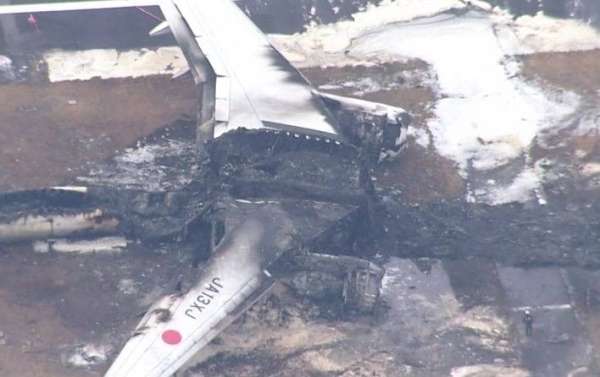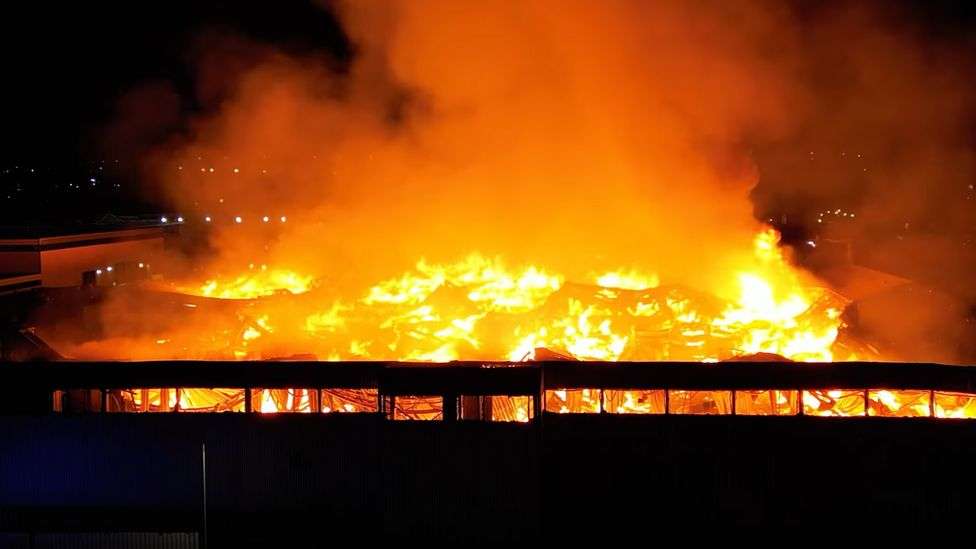Pilots of a Japanese airliner that collided with a smaller plane at Tokyo Haneda Airport were initially unaware that their jet was on fire.
It was a flight attendant who informed them of the cabin fire, a Japan Airlines spokesperson told the OceanNewsUK.
After that, the evacuation of all 379 on board Japan Airlines Flight 516 proceeded with life-saving precision.
Five of six people on board the smaller coastguard plane, a Bombardier Dash-8, died.
"Right after the plane touched down, the pilot felt a sudden shock, and lost control to stay in the runway. A fire took place but the pilots didn't recognise it in the beginning and learned about it [through the] cabin attendant," the JAL spokesperson said.
There were three pilots and 12 flight attendants on board when the incident took place. The aircraft's announcement system was damaged, leaving the crew to use megaphones and their own voices to shout instructions.
"The first thing cabin attendants did [after they realised there were] passengers who recognised that their plane was on fire, was to make them stay calm and not to stand up, which could make the escape very difficult. The announcement system was unusable so these instructions were made without it."
Japanese media have described the evacuation as a "miraculous 18 minutes". Passengers left their hand luggage, dashed to emergency exits and slid out of the aircraft before it was engulfed in flames.
"[As] smoke started to come into the cabin and spread out... cabin attendants [began shouting] at passengers, [saying]: 'Leave your belongings!', 'Take off your high heels', and 'Head down'," said the spokesperson.
Their "co-operation... was [the] key for all passengers [being able] to escape quickly and safely", they added.
Japanese authorities said late on Wednesday that the coastguard plane was not cleared for take-off on Haneda's runway. The plane was scheduled to deliver relief supplies to earthquake-hit areas.
According to officials, the JAL flight was cleared to land on runway 34R at Haneda while the coastguard aircraft was told to "taxi to holding point C5" - a place on the airfield's taxiway system where aircraft await permission to enter the active runway for take-off.
The transcript shows the coastguard aircraft acknowledged the call from air traffic to taxi to the holding point - its last transmission before the collision.
The transcripts appear to contradict the coastguard plane's captain - the only one of the six crew to survive - who told investigators he had been given permission to enter the runway which the JAL airliner was approaching.
The OceanNewsUK has also found information that suggests the series of lights at the relevant holding point may not have been working. But experts point out there are other visual cues like painted markings which would show where aircraft needed to stop short of the runway.
The well-drilled scenes on the Japan Airlines plane contrast starkly with aircraft evacuations that fail to strictly adhere to safety protocols.
In 2016, an Emirates Boeing 777 crash landed in Dubai and video footage showed chaotic scenes of passengers trying to take their luggage with them as they fled to the emergency slides. The crew were praised for their efforts to evacuate passengers, and luckily all 300 on board the Dubai flight survived.
Tuesday's incident is the first major accident involving an Airbus A350, one of a new breed of aircraft built largely of advanced materials such as carbon fibre-reinforced plastic.
The aircraft manufacturer is sending a team of specialists to assist in the investigation of the Japan Transport Safety Board.








